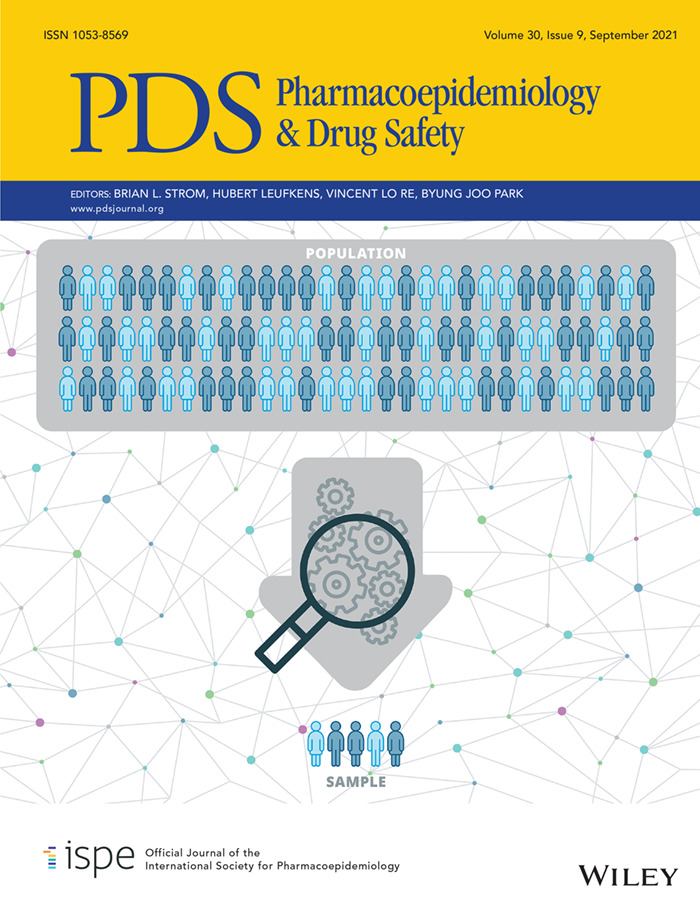





















- Blogs
- Using Evidence to Support Your Sampling Strategy: Key Steps 5
|
Most observational studies are carried out on a sample of limited size drawn from the population of interest. Therefore, to interpret the generalisability of a study to a whole population, representativeness of a sample is fundamental. However, without substantial evidence to support the sampling strategy, it is impossible to assess its relevancy and evaluate its generalisability. This begs the question: |

|
How do we present evidence for a sampling strategy?
To improve the reporting of the sampling strategy and allow the evaluation of the representativeness of the results, we present 5 readily implementable ways to incorporate evidence that supports your sampling strategy. Whilst initially developed in the specific context of multinational Risk Minimisation Measures (RMMs) effectiveness studies, they are relevant to any observational study within their respective research context.
-
Add a dedicated section for sampling strategy in the protocol
Keeping all the sampling information in one place, in a report or protocol, will keep the information consistent, help the reader gain more clarity, avoid misinterpretation, and help appropriately assess the representativeness of the sample. To help, simply organise this information in a structured way. For example, add sub-sections in the ‘Setting’ section in the protocol, such as:
- Country selection
- Specialty/setting selection
- Sampling frame
- Sampling methods
Alternatively, the rationale for the sampling strategy can be grouped in a specific “Representativeness “section.
-
Provide evidence for the geographical selection
When a choice of a sub-region has to be made when studies cover a larger region (i.e., multi-country) due to operational & regulatory constraints, timelines, etc., the common rationales used are:
- Patient or eligible HCP prevalence
- Country diversity: Geographic location, size and population diversity, healthcare system type
However, the evidence should also be provided, so that readers are able to determine the validity and suitability of sub-regions to represent the larger region.
To add evidence for the selection of a sub-region:
- When aiming for diversity, cluster potential candidate countries by zone, size or type of healthcare, according to their recognised classifications and their references
- For eligible patient or HCP prevalence, use sales data as a proxy by presenting it as a geographically divided summary table with references of the source of this information (e.g. IQVIA MIDAS sales)
-
Support sample specialty/setting selection
A common HCP/site(s) sampling strategy is to use a proportionate representation of medical specialties involved in patient treatment, but too often the evidence is missing. This evidence must be shown using details of the clinical practice, such as specialties involved in patient care, patient load and work setting for the referenced region.
Evidence to support HCP/site(s) sampling strategy can be retrieved from:
- Literature search
- Prescription monitoring studies or sales records available either from Marketing Authorisation Holder (MAH) affiliates or IQVIA RWE databases in each country
- A feasibility (pilot) study
where the origin of the information and potential limitations are to be outlined in the report or protocol1.
-
Provide evidence of the sampling frame
Frequently, HCP/site samples are drawn from the sampling frame/source that consists of:
- An existing network of physicians or HCP databases
- A list of targeted physicians for educational materials
- Physician lists provided by the MAH
Rarely are details of the sampling frame and coverage of the source population described, making it difficult to assess the representativeness of the current practice, in spite of the EMA guideline: “Where any sampling from a source population is undertaken, description of the source population and details of sampling methods should be provided”1.
Practical ways to provide a more detailed sampling frame include:
- An explanation on how the lists are constructed and maintained
- Details on whether sampling procedures for panel member recruitment are applied to the target representative sample of the source population
- The percentage coverage of the list of the source population
- If the sampling frame has limited coverage, show a comparison between the data available on the sampling frame and on the source population
-
Document the comparison of participants vs non-participants:
According to the new addendum of the Guideline on good pharmacovigilance practices (GVP) Module XVI, “efforts should be made to document the proportion of non-responders and their characteristics to evaluate potential effects on the representativeness of the sample.”2 Comparison of the final sample with the overall target population for HCPs/settings and patients can be achieved using different supporting materials.
- For HCPs/site(s) comparison: use details of the sampling frame on available characteristics vs. published national statistics when they exist
- For patient comparison: use larger pools of patients in RWE healthcare databases or published literature about larger cohorts of patients
Moving forward with transparency.
Documenting the elements supporting the theoretical framework for sampling methodology is essential to understanding the sample and interpreting the generalization of results, but researchers need to accept that more transparency is necessary, especially for the uptake of RWE, and commit to reporting the details. Let’s show integrity with evidence.
To learn more about representativeness for effectiveness of RMM, please read this peer-reviewed article, or reach out to us here.
- European Medicines Agency. Guidance for the format and content of the protocol of non-interventional post-authorisation safety studies 2012 February 12, 2021. Available from: https://www.ema.europa.eu/en/documents/other/guidance-format-content-protocol-non-interventional-post-authorisation-safety-studies_en.pdf.
- European Medicines Agency. Guideline on good pharmacovigilance practices (GVP) Module XVI – Risk minimisation measures: selection of tools and effectiveness indicators (Rev 2)2017 February 2021. Available from: https://www.ema.europa.eu/en/documents/scientific-guideline/guideline-good-pharmacovigilance-practices-module-xvi-risk-minimisation-measures-selection-tools_en-3.pdf.





